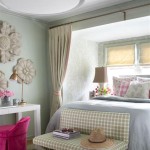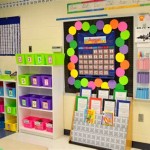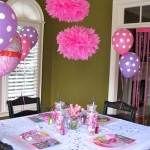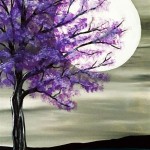Monogrammed Home Decor: A Personalized Touch for Every Space
Monogrammed home decor offers a unique and sophisticated way to personalize living spaces. From subtle accents to bold statements, incorporating initials or names into decorative items adds a sense of individuality and ownership. This practice transcends mere aesthetics, imbuing objects with sentimental value and transforming a house into a home. The appeal of monogramming lies in its ability to blend seamlessly with various design styles, making it a versatile choice for homeowners seeking to customize their environments.
The history of monograms dates back centuries, initially used by royalty and the wealthy to mark possessions and signify lineage. Over time, this practice evolved, becoming more accessible to the general public. Today, monogramming serves as a popular method for personalizing a wide range of items, from clothing and accessories to home furnishings and decorative objects. The availability of advanced technology and diverse materials has further contributed to the popularity of monogrammed home decor, allowing for intricate designs and customized solutions.
The selection of monogrammed items for the home is vast, encompassing everything from linens and towels to wall art and furniture. The choice of font, color, and placement are crucial considerations in ensuring that the monogram complements the overall decor. Proper planning and attention to detail can result in a cohesive and visually appealing personalized space. Monogramming is not merely about adding initials; it is about creating a meaningful connection to one's surroundings and expressing personal taste.
Selecting the Right Monogram Style
Choosing the appropriate monogram style is paramount in achieving the desired aesthetic. Several factors influence this decision, including the formality of the space, the existing decor, and individual preferences. Monogram styles range from classic and traditional to modern and minimalist. Traditional monograms often feature intertwined initials in ornate fonts, creating a sense of timeless elegance. These styles are well-suited for formal living rooms, dining rooms, and bedrooms.
Modern monograms, on the other hand, tend to be simpler and more streamlined. They often employ sans-serif fonts and clean lines, lending a contemporary feel to the space. These styles are ideal for modern homes, minimalist apartments, and areas where a less formal atmosphere is desired. The choice between traditional and modern monograms ultimately depends on the homeowner's personal style and the overall design concept.
Beyond the general categories of traditional and modern, there are numerous variations in monogram styles. Script fonts, such as those used in calligraphy, can add a touch of romance and sophistication. Block fonts, with their bold and geometric shapes, convey a sense of strength and stability. Serif fonts, characterized by small decorative strokes at the end of letters, offer a balance between formality and readability. The ideal font should be legible, visually appealing, and consistent with the overall design theme.
The arrangement of initials is another critical aspect of monogram design. Traditionally, the last name initial is placed in the center, with the first name initial on the left and the middle name initial on the right. However, variations exist, such as placing all initials in a straight line or using only the first initial of the last name. The choice of arrangement should be guided by aesthetic considerations and personal preferences. It is essential to ensure that the initials are balanced and visually harmonious.
Color plays a significant role in the overall impact of a monogram. Neutral colors, such as white, black, gray, and beige, are versatile and blend seamlessly with a wide range of decor styles. Bold colors, such as red, blue, and green, can add a pop of personality and create a focal point. Metallic colors, such as gold, silver, and bronze, lend a touch of luxury and sophistication. The color of the monogram should complement the color of the item being monogrammed and the surrounding decor.
The size of the monogram should be proportionate to the item being decorated. A large monogram on a small item may appear overwhelming, while a small monogram on a large item may be barely noticeable. It is essential to consider the dimensions of the item and the space available for the monogram. Experimenting with different sizes and placements can help determine the most visually appealing option. Ultimately, the goal is to create a monogram that is both noticeable and aesthetically pleasing.
Incorporating Monogrammed Items into Different Rooms
Monogrammed items can be strategically incorporated into various rooms throughout the home, each offering unique opportunities for personalization. In the bedroom, monogrammed bedding, such as duvet covers, pillowcases, and shams, can create a luxurious and inviting atmosphere. Monogrammed towels and bathrobes in the bathroom add a touch of elegance and make guests feel welcome. In the living room, monogrammed throw pillows, blankets, and wall art can enhance the decor and reflect personal style.
The dining room offers several possibilities for incorporating monogrammed items. Monogrammed napkins, placemats, and tablecloths can elevate the dining experience and create a sophisticated setting for meals. Monogrammed glassware and silverware add a personal touch to the table setting. In the entryway, a monogrammed doormat or wall sign can welcome guests and make a statement about the home's identity. The kitchen can also benefit from monogrammed items, such as aprons, oven mitts, and tea towels.
When incorporating monogrammed items into different rooms, it is essential to maintain a sense of consistency and cohesion. The monogram style, color, and size should be consistent throughout the home to create a unified and harmonious aesthetic. Avoid using too many monogrammed items in a single room, as this can create a cluttered and overwhelming effect. Instead, focus on selecting a few key pieces that will make a statement and enhance the overall decor.
Consider the existing decor when choosing monogrammed items. The monogram style, color, and size should complement the existing furniture, wall color, and accessories. If the room is decorated in a traditional style, opt for classic monograms in elegant fonts. If the room is decorated in a modern style, choose minimalist monograms in clean fonts. The goal is to create a cohesive and visually appealing space that reflects personal style and taste efficiently.
Monogrammed items can also be used to create personalized gifts for friends and family. A monogrammed throw blanket, towel set, or piece of wall art can be a thoughtful and memorable gift for any occasion. When selecting monogrammed gifts, consider the recipient's personal style and preferences. Choose a monogram style, color, and size that aligns with their taste and complements their home decor. A personalized gift shows that you put thought and effort into selecting something special and meaningful.
Materials and Techniques Used in Monogramming
The materials and techniques used in monogramming vary depending on the item being decorated and the desired effect. Common materials include fabric, leather, wood, metal, and glass. Each material requires different techniques and equipment to achieve a high-quality monogram. The choice of material and technique should be guided by the durability, aesthetics, and functionality of the item being monogrammed. Understanding the available options is crucial for selecting the most appropriate method for each project.
Embroidery is a popular technique for monogramming fabric items, such as linens, towels, and clothing. This technique involves using a needle and thread to stitch the monogram onto the fabric. Embroidery can be done by hand or by machine. Machine embroidery is faster and more precise than hand embroidery, making it suitable for large-scale projects. The choice of thread color, stitch type, and font can significantly impact the overall appearance of the monogram.
Engraving is a technique used to create monograms on hard surfaces, such as metal, wood, and glass. This technique involves using a sharp tool to carve the monogram into the surface. Engraving can be done by hand or by machine. Machine engraving is more precise and consistent than hand engraving, making it suitable for intricate designs. The depth and width of the engraving can be adjusted to create different effects.
Printing is a versatile technique that can be used to create monograms on a wide range of materials, including fabric, paper, and plastic. Several printing methods are available, including screen printing, digital printing, and heat transfer. Screen printing is ideal for large-scale projects, while digital printing is suitable for small-scale projects with intricate designs. Heat transfer involves using heat to transfer a pre-printed monogram onto the item. Each printing method has its advantages and disadvantages, so it is essential to choose the most appropriate option for each project.
Applique is a technique that involves attaching fabric pieces onto a larger fabric background to create a monogram. This technique is often used to add dimension and texture to monogrammed items. Applique can be done by hand or by machine. The choice of fabric, color, and stitch type can significantly impact the overall appearance of the monogram. Applique is a creative and versatile technique that allows for a wide range of design possibilities.
Die-cutting is a technique that involves using a sharp metal die to cut out a monogram shape from a material, such as paper, fabric, or vinyl. This technique is often used to create monograms for scrapbooking, card making, and other craft projects. Die-cutting machines are available in various sizes and styles, ranging from manual machines to electronic machines. The choice of die and material will depend on the desired effect and the specific project requirements.
The selection of monogrammed home decor allows individuals to express their personality and add a personal touch to their living spaces. By carefully considering the monogram style, placement, materials, and techniques, it is possible to create a cohesive and visually appealing home environment that reflects individual tastes and preferences.

Magnolia Personalized Monogram Custom Name Home Deco Est Sign Rusted Orange Craftworks Co

Monogram Decor Letter Plaques Monogrammed Home Israel

Monogrammed Decor Accents The Zhush

Monogram Decor Nursery Monogrammed Home

Make Your Mark With Monogrammed Home Décor Ethan Allen The Art Of Making

Is Monogrammed Home Decor Going Out Of Style

Monogrammed Home Decor Western Cky Derby

How To Diy Monogrammed Home Decor Plaid

Pink Girls Room Decor Monogrammed Home

Wooden Monogram Wall Hanging Initials Photo Prop Graduation Home Decor Bedroom
Related Posts







